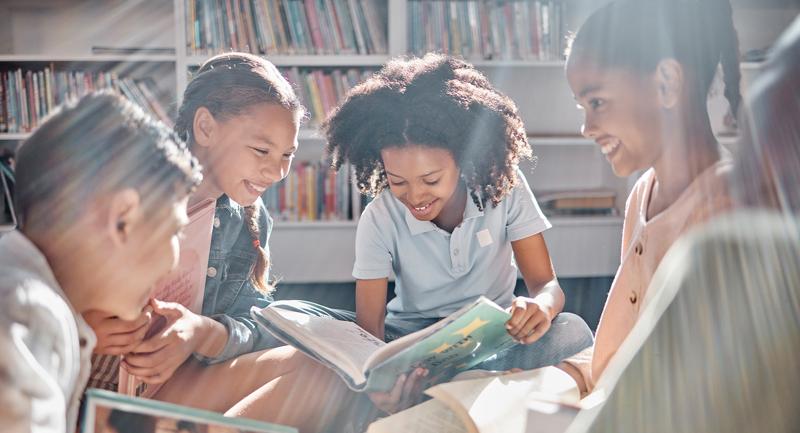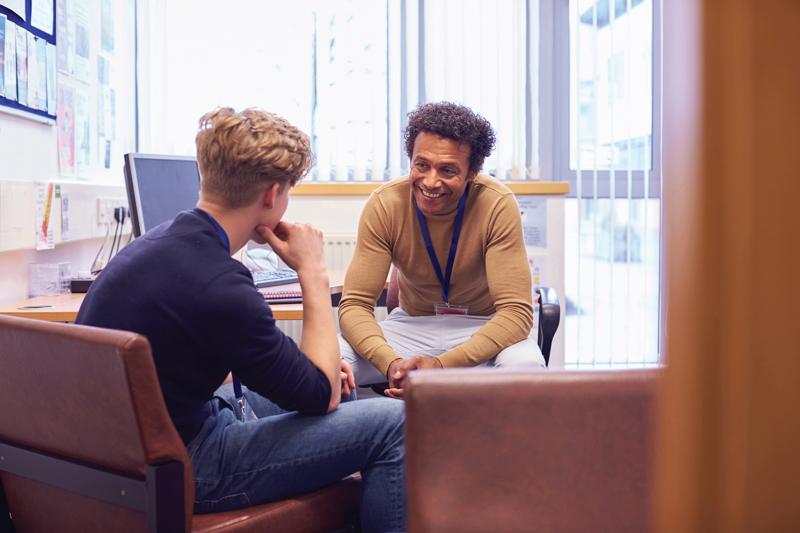An effective lesson gets students thinking and allows them to interact and ask questions, tap into their background knowledge, and build new skills. This article offers practical tips for planning engaging lessons that will help your students retain more of what they learn.
"A lot of approaches to lesson planning are content-driven, giving teachers some boxes to fill in," says Peter Brunn, director of professional development at the Developmental Studies Center in Oakland, Calif., and author of The Lesson Planning Handbook: Essential Strategies That Inspire Student Thinking and Learning. "While these approaches include what we want to teach, they don't often contain how we're going to teach it." It's the "how," says Brunn, that makes all the difference in whether students actually learn.
Effective lesson planning requires the teacher to determine three essential components: the objective, the body, and a reflection.
To start, come up with an active objective. Instead of, "Today we'll cover the causes of the Civil War," try reframing it so that the lesson seems a little more engaging. "Today we'll explore different reasons that the Civil War began" may seem like a subtle change, but rather than signaling that you are going to lecture, it allows space for the students to figure it out together with you.
Brunn encourages teachers to create lessons that allow students to investigate various possibilities—even wrong answers—so that they truly understand why something is right. "You can't wing that kind of lesson," he says. "You have to set it up intentionally."
Once you have an active objective, it's time to plan the body of the lesson. Brunn suggests writing down open-ended questions and deciding how you will ask them and what you will do if your students don't or can't answer these questions. How will you probe their thinking? You need to continually facilitate the lesson to keep students focused.
Judy Sheldon, an instructor in methods in secondary social studies and the field supervisor for student teaching at Syracuse University, encourages teachers to create opportunities for higher-order thinking. "Find ways to let them reveal things, and put that into your plan. You might want them to interpret a map, analyze a document, and so on. Always make sure they are building their skills," Sheldon says.
Next, it's reflection time. Ask students what they learned academically and socially and what they think you could have done differently. Brunn says the answers will help you close the lesson thoughtfully.
Brunn has worked with educators in the Virginia Beach City Public Schools to help them design more effective lesson plans. The district emphasizes 21st century skills development, so teachers seek to infuse effective communication, collaboration, problem solving, critical thinking, and creative thinking into all of their lessons.
"We try to get teachers to ask a lot of open-ended questions for students to discuss," says Lorena Kelly, elementary curriculum coordinator. "When you prepare your lessons in that manner, your lessons become more strategic."
Kelly acknowledges that it's challenging to switch from the traditional sage-on-the-stage teaching method to taking a backseat and letting lessons be a bit more ambiguous, but she believes strongly in making the change. "You lose a bit of control, but when the kids take charge, they retain a lot more of what they learn" she says.
Kelly and Kelli Cedo, who coordinate Title I programs for the district, hold lesson-planning workshops using the following strategies:
- Determine the purpose of the lesson. If you have a clear expectation, so will your students. "Remember, we are preparing our students for jobs we don't even know about yet," Kelly says. "They need to learn how to take ideas they hear and come up with new and creative ideas. Our lessons need to provide those kinds of opportunities."
- Create space for student thinking and discussion. "I ask teachers to make sure their questions allow for student discussion," Cedo says. "Can students agree, disagree, and explain their reasoning? Can they arrive at different conclusions and discuss with their peers in a comfortable, safe environment?"
- Be prepared to push that student thinking further. It helps to have prompts in your plan. How will you take them to the next level? How will you reach the ones who aren't getting it? Students must have an opportunity to apply their thinking independently. This should be part of the lesson and can be whole-group, mini-group, or individual work.
- Make time for reflection. This is the time when you come together with your students and summarize what worked and what didn't. By listening, you will know if you have met your goals and determine if any changes need to be made.
And of course, be sure to listen to your students and encourage them to do the same for one another.
To help teachers learn how to create safe, collaborative classrooms, Cedo guides them in building communities that address all levels of learners. She encourages teachers to think with the end in mind, asking, What are my students gaining in this learning? Will they be able to transfer it or apply it to something?
Kelly and Cedo say the teachers they worked with were amazed at the difference they saw in student engagement, behavior, and enjoyment once they began planning lessons in a more strategic manner. "In the end, we must have all the students in mind. Every decision has to be about the success of every student," Kelly says.
Here are some more tips on developing effective lesson plans:
- Incorporate student interests into your lessons. "People learn what they want to learn," says Melinda Schoenfeldt, a professor in the Department of Elementary Education at Ball State University. "If you discover their interests and work them into your lessons, they'll pay attention and learn more." Take your students' needs into consideration. "Your lessons must reflect the cultures of the kids; they must see themselves in the room," Schoenfeldt says. "When I was young, I told my mom I wanted to be a boy because my teachers read stories about boys who had adventures while girls giggled on the sidelines. Children need to see themselves in the literature, in the pictures you put on the wall, and in the examples you give."
- Select purposeful activities and assignments. The best activities keep kids actively engaged and involve as many senses as possible, Schoenfeldt says. They must also match the needs of the learners.
- Make your lessons relevant. Write down the reason the lesson is relevant, Sheldon advises. "The answer can't be 'because it's on a state exam,'" she says. "You need to figure out how to link the lesson to what is happening today. Find a way to make it timely—even if it's a bit of a reach."
- Share lessons with your colleagues. Sheldon encourages teachers to share lessons that work—and ones that don't—with their colleagues. Talk about ways to improve those lessons. That way, everyone benefits.
- Refine lessons based on feedback. Bob Kizlik, a retired college professor and creator of the ADPRIMA website for teachers, says teachers should aim for continuous improvement. "Sit down and analyze the results of what happened," he says.
Additional Resources
ADPRIMA offers tips and links for lesson planning at www.adprima.com/lesson.htm.
Follow Peter Brunn's blog for more lesson-planning help at www.devstu.org/peter-brunns-blog.
The University of Michigan's Center for Research on Learning and Teaching provides strategies for effective lesson planning at www.crlt.umich.edu/gsis/P2_5.php.
Check out ASCD's Teacher Effectiveness Suite.








